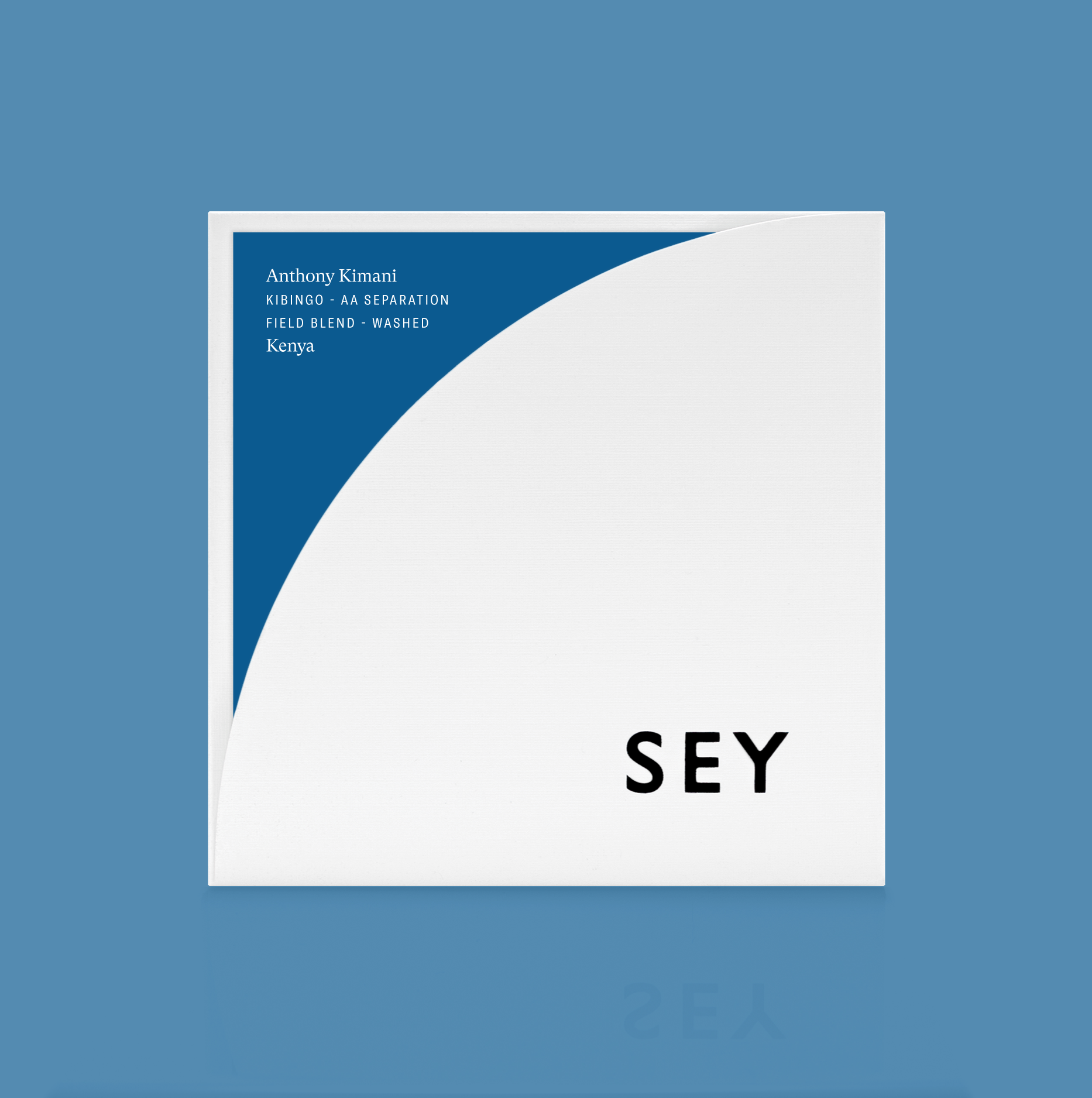
This was our highest-scoring Kenyan selection of the year—and it also won Kenya’s Taste of Harvest competition. In the cup we find blackberry, plum, starfruit, and rose.
SL28, SL34, Batian, Ruiru 11
Kirinyaga
1,750 masl
December, 2024
Hand-picked at peak ripeness and hand-sorted to select only the very best cherries. De-pulped and fermented for approximately 24 hours. Floated through channels to sort by density and remove remaining defects, then soaked overnight in fresh water. Dried on raised beds for 15 days, continually turned and hand-sorted.
ABOUT ANTHONY KIMANI
This is our first year purchasing coffee from Anthony Kimani—and what a year to begin. We were first introduced to his coffee by Peter Mbature, who supports us with exporting and sourcing in Kenya. It immediately stood out as one of the best Kenyan profiles we have tasted in years. Shortly after, this coffee went on to win 1st place in Kenya’s national Taste of Harvest competition.
ABOUT SL28, SL34, RUIRU 11, & BATIAN
“SL” is in reference to single tree selections made by Scott Agricultural Laboratories in 1935-1939. SL28 is of the Bourbon genetic group, and was selected for its drought resistance as well as its extremely high cup quality. SL28 is one of the most well-known and well-regarded varieties in Africa. It has consequently spread from Kenya to other parts of Africa as well as Central and South America. SL28 is non-hybrid, and very susceptible to disease. SL34 has a Typica-like genetic background selected from a single tree on the Loresho Estate in Kabete, Kenya. SL34 is extremely susceptible to disease, but has relatively high yield and quality potential at high altitudes.
Ruiru 11 is a Catimor hybrid that owes its existence to a coffee berry disease epidemic in 1968 that lead to the loss of 50% of Kenya’s production. The crisis sparked action. In the 1970s, the coffee research station at Ruiru—which gives Ruiru 11 its name—began an intensive breeding program of varieties that are immune to coffee berry disease, ultimately leading to the release of Ruiru 11 in 1985.
Batian is resistant to both leaf rust and coffee berry disease. It was created via single-tree selections from fifth filial (F5) generations from the male parent of some Ruiru 11 progenies. Batian is a composite variety, mixing three different pure line varieties. The varieties involved in the original crosses are: SL28, SL34, Rume Sudan, N39, K7, SL4 and the Timor Hybrid.
Pricing Details
FARM GATE (GREEN)
$20.03/KG
FOB
$22.75/KG
FOT
$24.20/KG
The cost of getting a coffee from cherry to beverage varies enormously depending on its place of origin and the location of its consumption. The inclusion of price transparency is a starting point to inform broader conversation around the true costs of production and the sustainability of specialty coffee as a whole.